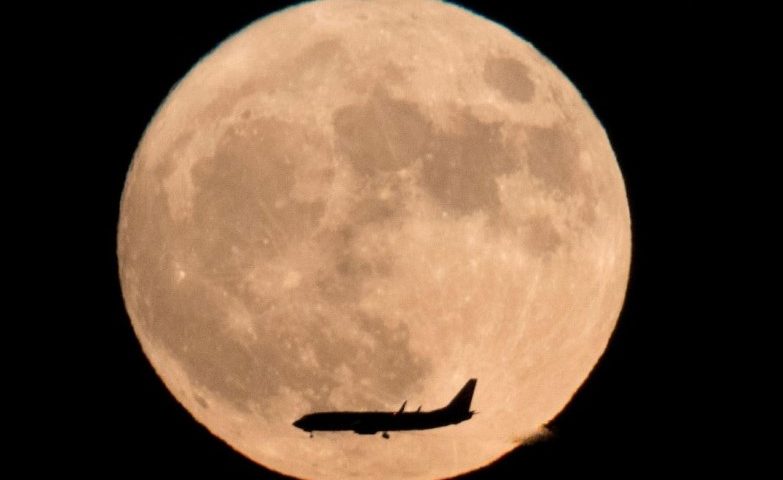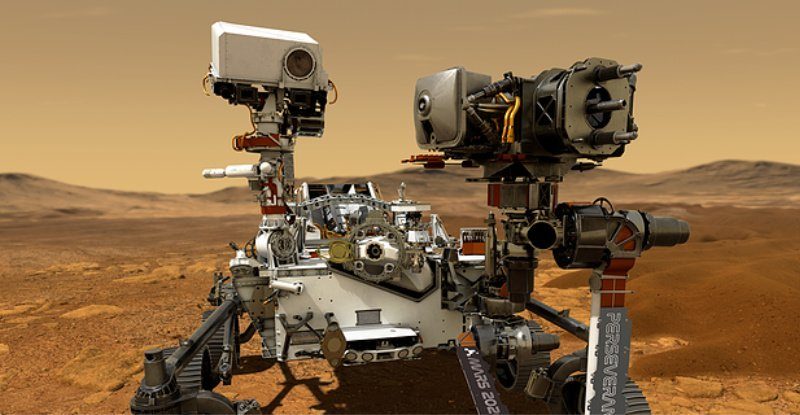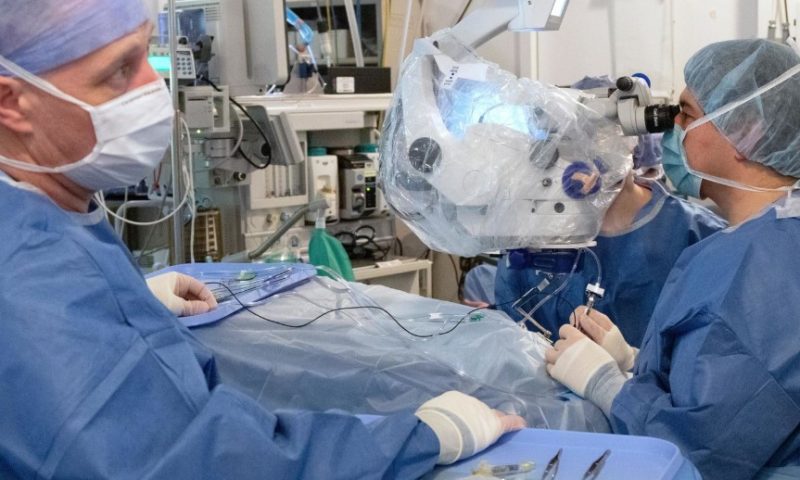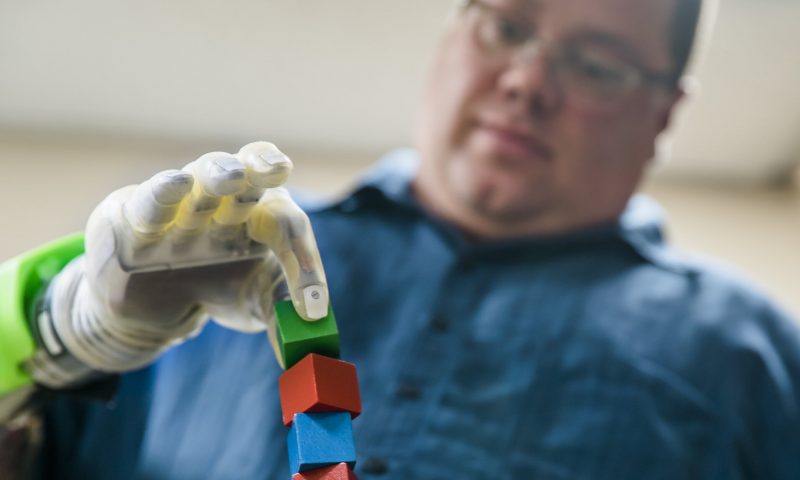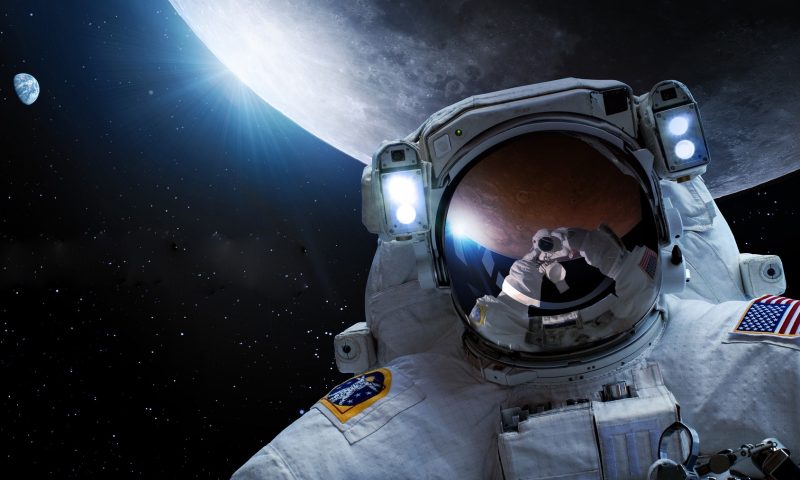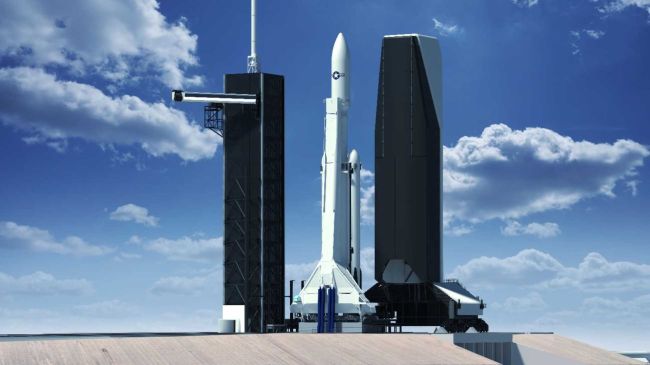Evidence from an ancient section of the Earth’s crust suggest that Earth was once a water-world, some three billion years ago. If true, it’ll mean scientists need to reconsider some thinking around exoplanets and habitability. They’ll also need to reconsider their understanding of how life began on our planet.
A new paper presents these results in the journal Nature Geoscience. The title of the paper is “Limited Archaean continental emergence reflected in an early Archaean 18O-enriched ocean.” The co-authors are Boswell Wing of the University of Colorado, Boulder, and his former post-doc student, Benjamin Johnson at Iowa State University.
The work is focused on an area in the Australian Outback called the Panorama district. In that region in northwestern Australia there’s a slab of ocean floor 3.2 billion years old, that’s been turned on its side. The chunk of crust holds chemical clues about ancient Earth’s seawater.
“There are no samples of really ancient ocean water lying around, but we do have rocks that interacted with that seawater and remembered that interaction,” Johnson said in a press release.
“The origin and evolution of Earth’s biosphere were shaped by the physical and chemical histories of the oceans.”
From the paper “Limited Archaean continental emergence reflected in an early Archaean 18O-enriched ocean.
The authors wanted to re-boot the debate over what ancient Earth looked like, and to break new ground in the discussion.
In the introduction to their paper, the two authors say “The origin and evolution of Earth’s biosphere were shaped by the physical and chemical histories of the oceans. Marine chemical sediments and altered oceanic crust preserve a geochemical record of these histories. Marine chemical sediments, for example, exhibit an increase in their 18O/16O ratio through time.”
Marine sediments have been well-studied over time, but the authors of this study looked at the ancient crust instead. The ancient oceans held different types of oxygen that were then deposited into the crust. The scientists gathered over 100 samples of the ancient rock and analyzed it for two oxygen isotopes: oxygen-16 and oxygen 18. They wanted to find the relative amount of each isotope in the ancient crust, to compare it to the amounts in the sediment.
Their results showed more oxygen-18 in the crust when it was formed 3.2 billion years ago, meaning the ocean at that time had more oxygen-18. The pair of researchers say that means that when that crust formed, there were no continents. This is because when continents form, they contain clays, and those clays would have absorbed the heavier oxygen-18. So if there had been continents 3.2 billion years ago, their crust samples would have held less oxygen-18.
The over-arching conclusion of their work is that the Earth’s oceans went through two distinct states: one prior to continents forming, and one after continents formed.
Marine chemical sediments have been studied extensively to try to piece together continent formation on ancient Earth. As the study says, those ancient sediments include “carbonates, phosphates, microcrystalline silica and iron oxides. As these minerals form directly from aqueous species, they can reflect the ?18O of the water with which they coexist.” The sediments are like an archival record of Earth at the time, and the older sediments show oxygen-18 values increasing steadily through time, all the way up to today. But this work contrasts with that, and the authors suggest that seawater oxygen-18 decreased through time.
The pair of scientists constructed a model for ancient Earth, showing that “the initiation of continental weathering in the late Archaean, between 3 and 2.5 billion years ago, would have drawn down an 18O-enriched early Archaean ocean to ?18O values similar to those of modern seawater.” So only after continents formed, could the oxygen-18 values begin to look like modern values.
Although this study points to the possibility of ancient Earth as a water-world, it doesn’t mean that the planet was without any land-forms. Island-size areas of land, or even micro-continents, may have existed at the time, volcanic in nature, and very rocky. But the types of vast land-forms that cover the Earth today, rich in soil and with tall mountain ranges, may not have existed. If they had, the oxygen-18 content would have more closely resembled today’s.
“There’s nothing in what we’ve done that says you can’t have teeny, micro-continents sticking out of the oceans,” Wing said in a press release. “We just don’t think that there were global-scale formation of continental soils like we have today.”
The authors aren’t suggesting that their work is the definitive piece of evidence in the ongoing discussion around early Earth. They note that their are other possible reasons for their results.
If the ancient continents formed much more slowly than modern continents, that could explain the the discrepancy in oxygen-18. It’s also possible that the clays that absorb oxygen-18 formed in the ocean itself, rather than on the continents.
That points to an enduring mystery in Earth science: when exactly did continents form?
It’s likely, according to some evidence, that the continents could only form as the Earth’s core shed heat and cooled down. In any case, modern continents didn’t take shape until after the Jurassic. Prior to that, the single super-continent of Gondwana covered about one-fifth of the Earth’s surface. Wing wants to examine younger areas of the Earth’s crust to try to determine more clearly when the modern continents formed.
This study also touches on early life on Earth, and how and when it formed. Earth’s early oceans, much like modern oceans, acted as a buffer, which “mediated climatic feedbacks between the biosphere, atmosphere and geosphere through deep time, helping to ensure long-term planetary habitability.”
Science has painted a picture of what the early Earth may have looked like, and what the nature of the oceans was. But it’s far from complete. The evidence is all buried, in rock and in time. And as we seek to understand climate change here on Earth, and as we get better and better looks at exoplanets, all these questions about ancient Earth, the oceans, and the biosphere, take on new importance.
As the authors say in their paper, “An early Earth without emergent continents may have resembled a ‘water world’, providing an important environmental constraint on the origin and evolution of life on Earth as well as its possible existence elsewhere.“
“The history of life on Earth tracks available niches,” said Wing. “If you’ve got a waterworld, a world covered by ocean, then dry niches are just not going to be available.”

